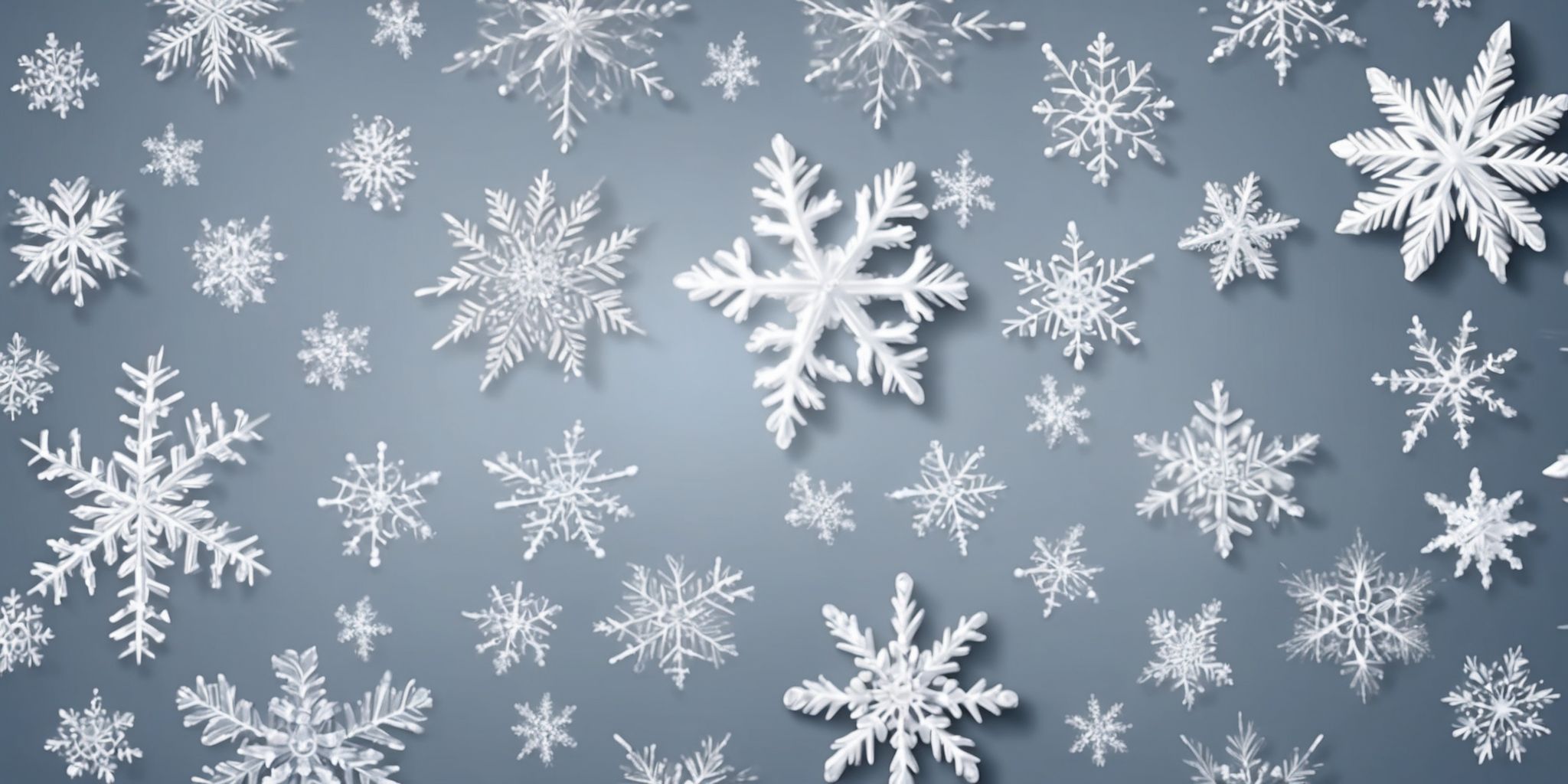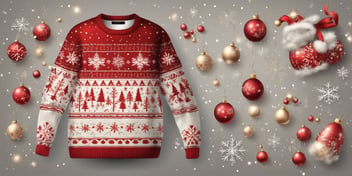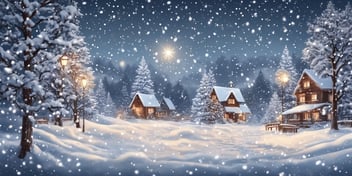- Blog
- Christmas questions
- What is the history of the Christmas-themed clothing and ugly Christmas sweaters?

Ah, the holiday season is upon us once again, sprinkling the air with a magical and cheerful ambiance. As we eagerly dig out our jingling ornaments and knit stockings, there is one peculiar fashion trend that has carved its way into the hearts of many revelers: the ugly Christmas sweater.
But have you ever wondered how this merry madness began? Join us on a whimsical journey through time as we unwrap the colorful history of Christmas-themed clothing and the rise of those fabulously hideous knitted masterpieces that have become synonymous with this festive time of year. Get ready to snuggle up, sip some cocoa, and brace yourself for a merry dose of fashion and nostalgia!
Overview of Christmas-themed clothing
Christmas-themed clothing has become a popular way to embrace the holiday spirit. From festive sweaters adorned with reindeer and snowflakes to Santa hats and elf costumes, there are endless options to choose from. Many people enjoy wearing these clothing items during the holiday season as a way to showcase their enthusiasm for Christmas.
Whether it's attending a family gathering, participating in an office party, or simply spreading joy while running errands, Christmas-themed clothing adds a touch of merriment to any occasion. It allows individuals to showcase their festive side and join in the holiday cheer.
Rise in popularity of ugly Christmas sweaters
The popularity of ugly Christmas sweaters has skyrocketed in recent years. These quirky garments, known for their gaudy designs and festive themes, have become a staple during the holiday season. They offer a fun and lighthearted way for people to express their Christmas spirit and sense of humor. Ugly Christmas sweater parties have become a popular social event, where attendees compete to wear the most outrageous sweater.
Celebrities and influencers have also embraced this trend, further boosting its popularity.
As a result, the demand for ugly Christmas sweaters has soared, leading to a market flooded with various designs and styles to suit all tastes.
History of Christmas-themed clothing
Early origins of Christmas attire
Early origins of Christmas attire can be traced back to religious traditions and symbolism. In the early centuries, Christians adorned themselves in special garments to celebrate the birth of Jesus. These garments often featured specific colors and symbols associated with the holiday season. Over time, as Christmas celebrations evolved, so did the clothing worn during this festive period.
Traditional garments like red and green robes, Santa Claus-inspired outfits, and even nativity scene costumes became popular choices. The significance of these early Christmas attires continues to influence the design and style of modern-day Christmas-themed clothing.
Religious significance and influence
- Christmas-themed clothing has a rich history rooted in religious significance.
- The influence of Christianity on Christmas attire can be seen throughout the ages.
- Early religious garments worn during nativity scenes and reenactments reflect the holy nature of the holiday.
- Symbolism plays a vital role in Christmas attire, with colors like red representing the blood of Christ and green representing eternal life.
- Religious themes continue to inspire modern Christmas clothing, with motifs like angels, nativity scenes, and religious symbols being commonly used.
- The religious influence on Christmas clothing highlights the sacred and spiritual aspects of the holiday, allowing individuals to express their faith while celebrating.
Traditional garments and symbolism
Traditional Christmas garments have long held symbolic meanings, adding a touch of nostalgia to the holiday season. These garments, often made of red, green, and white fabric, represent the colors associated with Christmas. Red signifies love and passion, while green is linked to renewal and rebirth. White is a symbol of purity and light.
Additionally, certain patterns like snowflakes or evergreen trees evoke the wintery spirit of Christmas. By wearing these traditional garments, individuals can express their connection to cherished holiday traditions and embrace the festive atmosphere.
Evolution of Christmas apparel
- The Victorian era played a significant role in shaping the Christmas fashion we know today. During this time, Christmas attire became more elaborate, incorporating luxurious fabrics and intricate designs.
- The commercialization of Christmas in the 20th century further influenced the evolution of Christmas apparel. Mass production made festive garments more accessible to the general public, fostering a culture of holiday dressing.
- Movies, television shows, and popular culture have also played a part in shaping Christmas fashion. Iconic holiday characters like Santa Claus and his red suit have become synonymous with Christmas attire.
- Today, Christmas apparel ranges from traditional attire like ugly Christmas sweaters to trendy and fashionable garments designed specifically for the holiday season.
- People use Christmas apparel as a way to express their holiday spirit and join in the festive celebrations. It has become a fun and lighthearted tradition to wear Christmas-themed clothing during the holiday season.
Victorian era and its impact
The Victorian era had a significant impact on the history of Christmas-themed clothing. During this time, the celebration of Christmas became more elaborate and extravagant. The influence of Queen Victoria and her interest in Christmas traditions led to the popularization of festive attire. People began wearing clothing with holiday motifs, such as holly, mistletoe, and Christmas trees. The Victorians also embraced the idea of gift-giving and exchanged clothing items as presents.
These customs not only shaped the Christmas fashion of that era but also laid the foundation for the commercialization of the holiday in the years to come.
Growing consumer culture and commercialization
Growing consumer culture and commercialization have greatly influenced the history of Christmas-themed clothing. As the demand for festive attire increased, retailers seized the opportunity to cater to this trend. They began offering an array of holiday-themed garments, ranging from cozy sweaters to novelty accessories. Through clever marketing techniques and strategic collaborations, these companies tapped into the consumer's desire for holiday spirit and expression.
This commercialization also extended to the customization of Christmas-themed clothing, allowing individuals to personalize their festive attire according to their unique preferences.
As a result, Christmas-themed clothing has evolved into a thriving industry, driven by consumer demand and commercial ventures.
Influence of movies, TV shows, and pop culture
- Christmas-themed clothing has been heavily influenced by movies, TV shows, and pop culture.
- Festive attire seen in popular holiday films and TV specials has inspired the creation of Christmas-themed clothing.
- Iconic characters like Santa Claus and Rudolph the Red-Nosed Reindeer have been depicted on sweaters and t-shirts.
- Movies like "Home Alone" and "National Lampoon's Christmas Vacation" have popularized the use of Christmas attire for comedic effect.
- Pop culture references and memes related to Christmas clothing have further elevated its popularity.
- Celebrities showcasing festive outfits in music videos and red carpet events have also contributed to the trend.
The rise of ugly Christmas sweaters
Origins of the ugly Christmas sweater trend
--Origins of the ugly Christmas sweater trend--
- Ugly Christmas sweaters gained popularity in the 1980s as a playful and ironic fashion statement during holiday festivities.
- In the past, these sweaters were often homemade or handed down from family, featuring bold and garish designs, including reindeer, snowflakes, and Santas.
- The trend resurged in the early 2000s with widespread adoption and themed parties.
- Ugly Christmas sweater competitions added a competitive element, encouraging participants to showcase the most outrageous and creatively designed sweaters.
- Social media played a significant role in spreading the trend globally, allowing people to share their unique sweater creations and inspire others to join in the fun.
Early examples and cultural references
Early examples of ugly Christmas sweaters and their cultural references can be traced back to the 1950s. These sweaters initially gained popularity for their quirky designs, featuring festive motifs like reindeer, snowflakes, and Christmas trees. Over time, they became associated with a sense of nostalgia and humor, sparking a trend that continues today.
Cultural references in movies, such as the iconic scene in "Bridget Jones's Diary" where Mark Darcy wears a reindeer-patterned sweater, further fueled the popularity of these sweaters. Today, people wear them as a way to express holiday cheer and embrace the lighthearted, festive spirit associated with Christmas.
Ugly Christmas sweaters in popular culture
Ugly Christmas sweaters have become a staple in popular culture, embraced by celebrities, influencers, and the general public. Here's how these festive fashion statements have made their mark:
- Celebrities and influencers frequently showcase their quirky Christmas sweaters on social media, setting trends and inspiring others to join in the fun.
- Ugly Christmas sweater parties have gained popularity, providing an opportunity for people to express their creativity and humor through their outfit choices.
- Competitions for the ugliest sweater have become a common feature, encouraging friendly competition and adding an element of excitement to holiday gatherings.
- Movies and TV shows often incorporate ugly Christmas sweaters as part of their holiday-themed episodes, further cementing their place in popular culture.
Celebrities and influencers embracing the trend
Celebrities and influencers have played a significant role in popularizing the trend of ugly Christmas sweaters. By donning these festive and quirky garments, they have made them fashionable and socially acceptable. Many celebrities have been spotted wearing these sweaters during holiday events or posting pictures on their social media platforms. Their influence has encouraged their followers to embrace the trend and participate in ugly Christmas sweater parties or competitions.
This widespreadadoption has not only made the trend more mainstream but has also allowed it to transcend cultural boundaries, making it an inclusive and fun way to celebrate the holiday season.
Ugly Christmas sweater parties and competitions
Ugly Christmas sweater parties and competitions have become a popular holiday tradition. These gatherings provide a fun and lighthearted atmosphere for friends, family, and coworkers. Participants showcase their most outrageous, tacky, or creatively decorated sweaters to compete for prizes or simply enjoy the festive spirit.
These events encourage creativity and allow individuals to express their unique personalities through fashion. Attendees often go all out, incorporating accessories, lights, and even sound effects into their ensembles. The joyous and playful nature of these parties brings people together, fostering a sense of community and shared laughter during the holiday season.
Whether hosted at homes, workplaces, or community venues, these parties provide an enjoyable opportunity for individuals to bond, create lasting memories, and embrace the spirit of Christmas in a truly festive and whimsical way.
Ugly Christmas sweaters as a fashion statement
Ugly Christmas sweaters have transformed from humorous attire to a legitimate fashion statement. Fashion designers have recognized the trend and collaborated on high-end versions of these sweaters. They have become an unexpected way for individuals to express their unique style during the holiday season. Celebrities and influencers have also embraced the trend, showcasing their own personalized ugly sweaters on social media platforms.
These sweaters have become a fun and light-hearted way to celebrate the holiday spirit while making a fashion statement. With their bold patterns, textures, and festive embellishments, ugly Christmas sweaters offer a chance to showcase creativity and stand out from the crowd.
Designer collaborations and high-end versions
Designer collaborations have brought a touch of luxury to the world of Christmas-themed clothing. These partnerships between high-end designers and fashion brands have resulted in stylish and unique versions of ugly Christmas sweaters. By infusing their expertise and creativity, designers have elevated the aesthetic of these traditionally kitschy garments, making them more appealing to fashion-conscious individuals.
These collaborations often incorporate premium materials, intricate designs, and attention to detail, giving the sweaters a high-end look and feel. Such partnerships offer consumers the opportunity to embrace the Christmas spirit while maintaining a sense of style and exclusivity.
Charitable initiatives and social impact
Charitable initiatives and social impact: Christmas-themed clothing, particularly ugly Christmas sweaters, have become a platform for supporting charitable causes during the holiday season. Many companies and individuals incorporate fundraising efforts into their sweater sales, donating a portion of the proceeds to various organizations. These initiatives not only raise awareness and funds for important causes but also encourage people to take part in the spirit of giving during Christmas.
By purchasing and wearing an ugly Christmas sweater, individuals can show their support for a cause while also spreading joy and holiday cheer. Examples of such initiatives include partnerships with non-profit organizations, campaigns to provide aid to disadvantaged communities, and fundraising events centered around the joy of wearing these festive sweaters.
Wrapping up
Christmas-themed clothing, including the infamous ugly Christmas sweater, has a fascinating history that dates back decades. These festive garments gained popularity in the 1950s and 1960s, as individuals began embracing the joyous spirit of the holiday season. During this time, iconic television shows contributed to the rise of Christmas sweaters, featuring characters donning eccentric designs. However, it was not until the early 2000s that the "ugly" Christmas sweater trend truly took off.
Costumes in various patterns and colors adorned with whimsical motifs became a staple at holiday parties, fuelling a demand for outlandish and gaudy attire. Today, ugly Christmas sweaters have become a beloved and humorous symbol of the holiday season, with people all around the world actively seeking the most outrageous designs to showcase their festive spirit.
Read On

Rock the Holiday Season with a Merry Christmas Ugly Sweater
'Tis the season to be jolly and wear hideously delightful sweaters! As the holidays near, let's...

Fashion Forward Festivities: The Trendy Christmas Tree Jumper
The holiday season is upon us, which means it's time to embrace festive fashion and spread some...

From Christmas Sweater to Stylish Dress: Rocking the Christmas Tree Jumper Dress
As winter brings its crisp chill and the smell of cinnamon-laced delights, the holiday season is at...